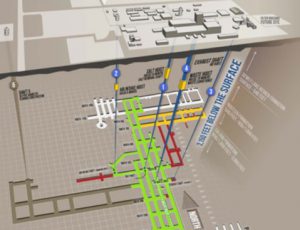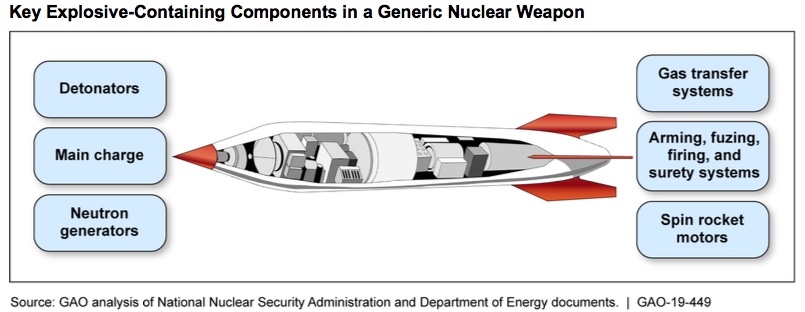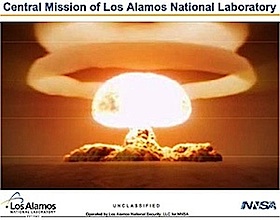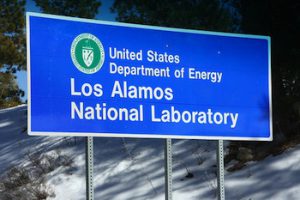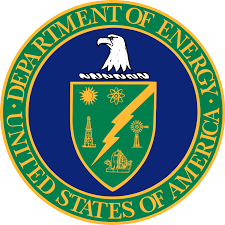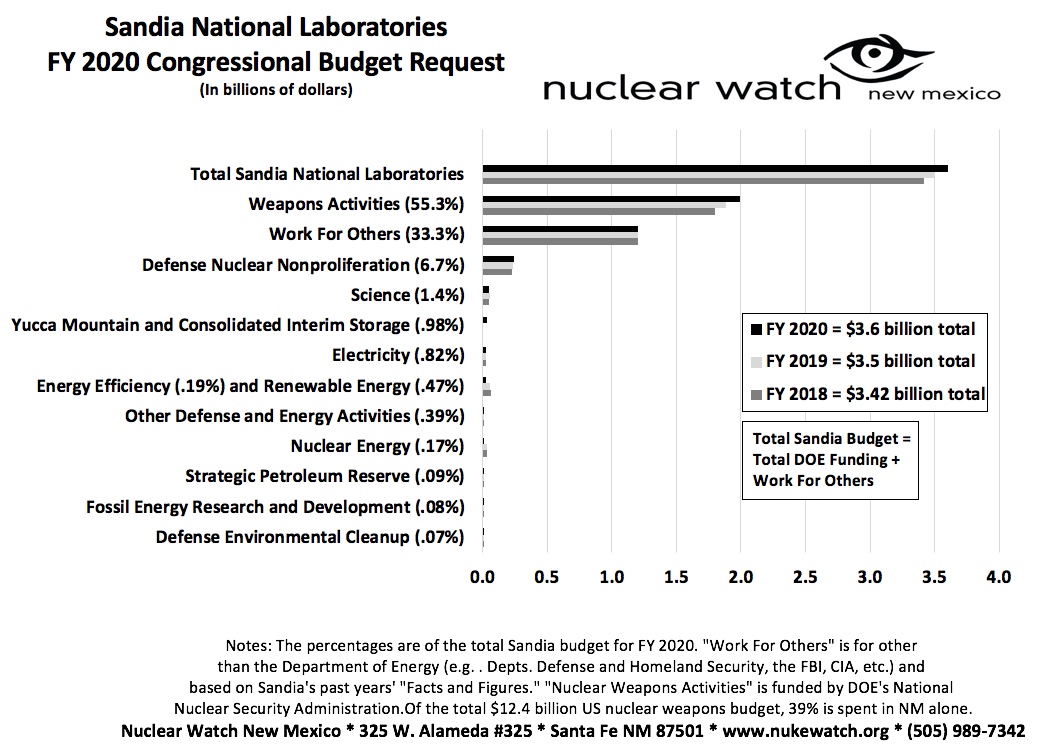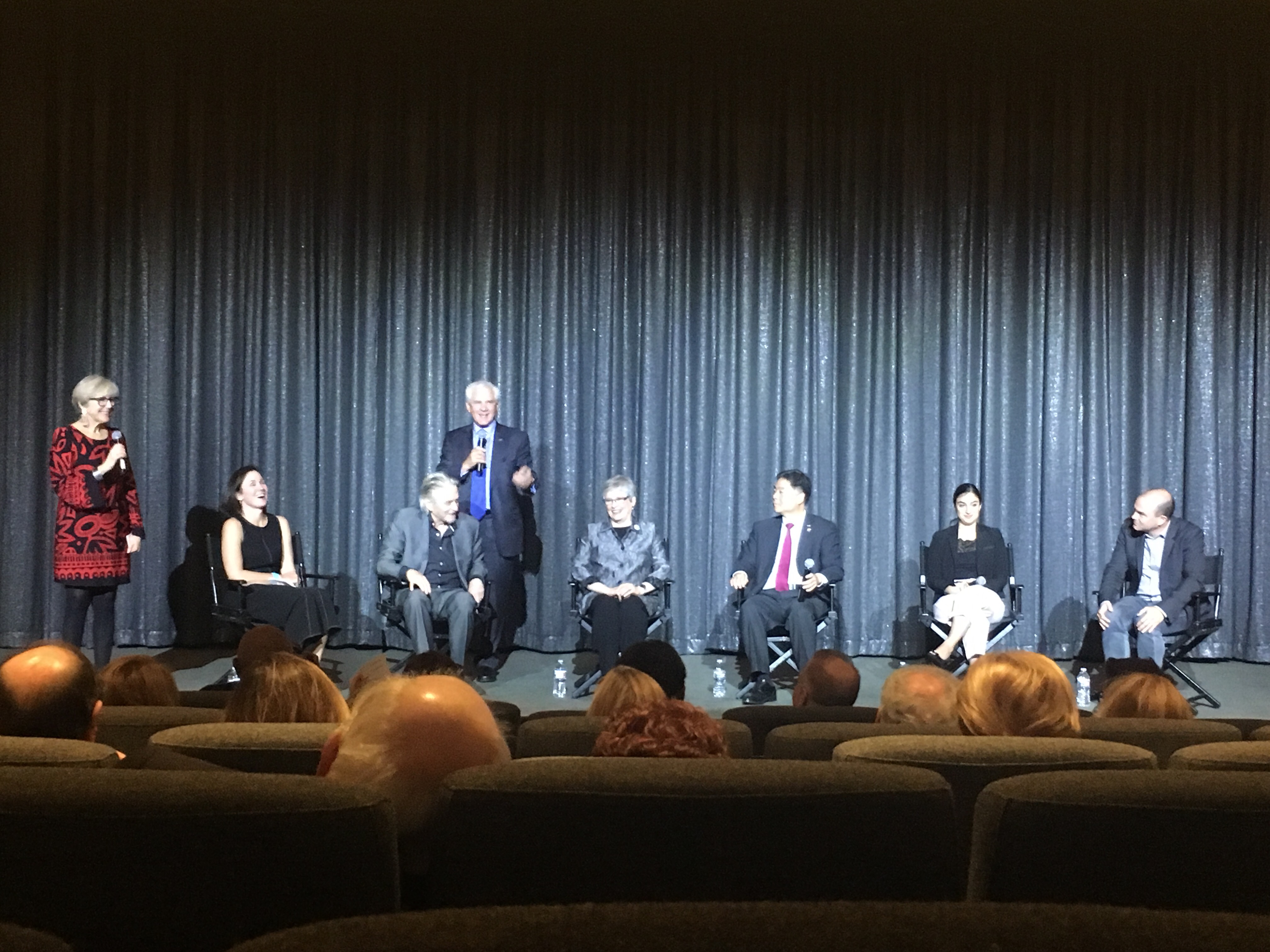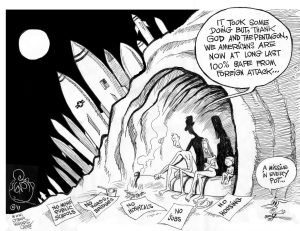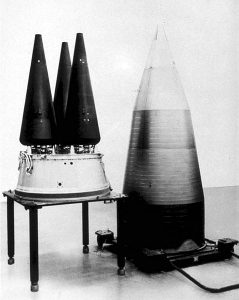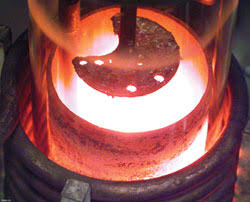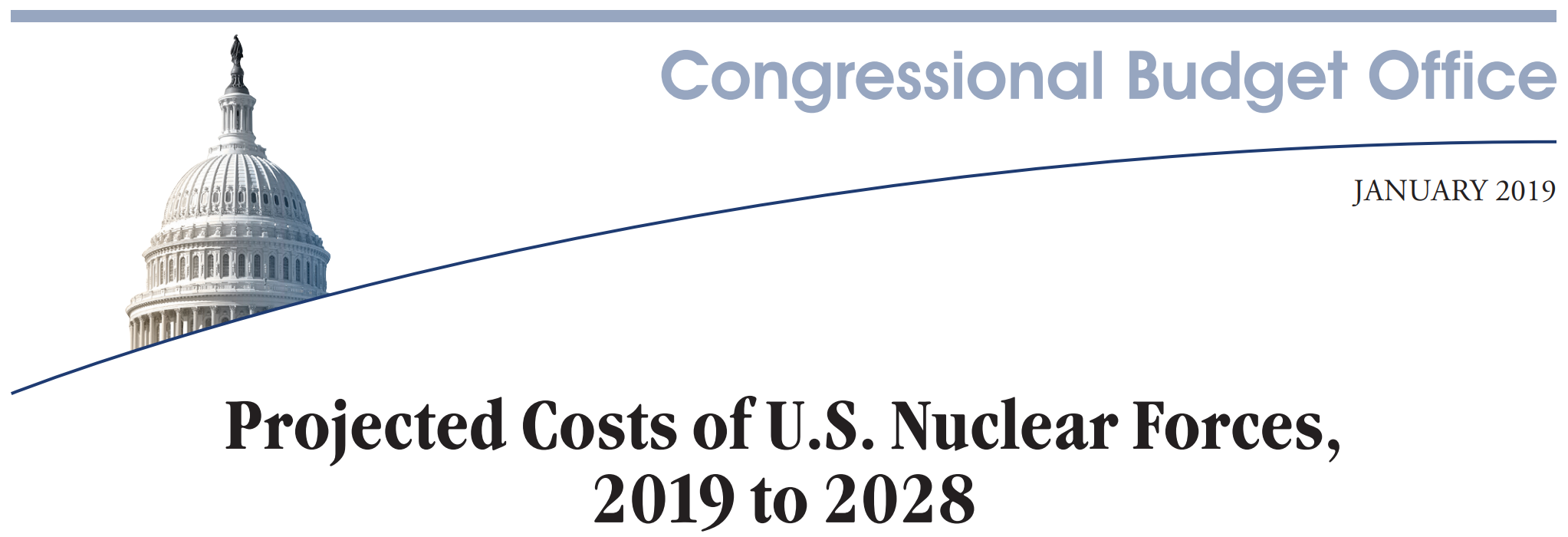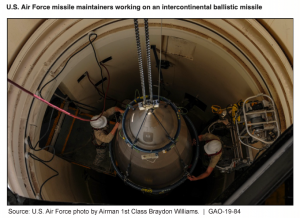Late Friday February 23 the Trump Administration released the detailed FY 2019 budget for the National Nuclear Security Administration (NNSA), the semi-autonomous nuclear weapons agency within the federal Department of Energy. Overall, NNSA is receiving a $2.2 billion boost to $15.1 billion, a 17% increase above the FY 2018 enacted level. Of that, a full $11 billion is for the budget category [Nuclear] “Weapons Activities”, 18% above the FY 2018 level. Of concern to the American taxpayer, DOE and NNSA nuclear weapons programs have been on the congressional Government Accountability Office’s High Risk List for project mismanagement, fraud, waste and abuse since its inception in 1990.
Under Trump’s budget, funding for nuclear warhead dismantlements stay flat at $56 million, (point).5% of NNSA’s total nuclear weapons budget, despite the fact that dismantlements save taxpayers by eliminating constant security costs.[1] NNSA’s Nonproliferation Programs are budgeted at $1.86 billion, only 16% the size of the nuclear weapons budget. Funding for DOE cleanup of Cold War legacy wastes remains flat, in a number of cases insufficient to meet legal milestones. Meanwhile, the Department of Energy cuts sustainable transportation, renewable energy and energy efficiency by 33%.
Some selected NNSA FY 2019 nuclear weapons budget highlights are:
- Funding is tripled from $218.76 million to $654.77 million for the W80-4 Life Extension Program for a Long Range Standoff nuclear warhead,[2] (slated for $804 million in FY 2022). This is for a new dual-use air launched cruise missile (ALCM), which is particularly destabilizing because ALCMs can evade radar by hugging topography. In addition, the targeted adversary has no way of knowing until it is hit whether the payload is conventional or nuclear. The LRSO nuclear weapon is arguably redundant to the new B61-12 nuclear bomb, to be delivered by the new super-stealthy new B21 Raider heavy bomber (whose astronomical costs are kept classified by the Air Force).
- Funding for the world’s first nuclear smart bomb, the B61-12, is increased from $611.9 million to $794 million, with a First Production Unit scheduled for March 2020. As part of the escalating Cold War II arms race, its main mission is to be forward deployed in NATO countries against Russia.
- The Obama Administration had delayed the Interoperable Warhead (IW) for five years. The IW-1 is very much back as a $53 million FY 2019 budget line item, up from $0 in FY 2018. The NNSA and the nuclear weapons labs are proposing three different types of interoperable warheads, which all together could cost more than $40 billion.
The IW-1 is supposed to be interoperable between the Air Force’s W78 intercontinental ballistic missile warhead and the Navy’s W88 sub-launched warhead. However, a 2012 memo leaked to Nuclear Watch and Tri-Valley CAREs shows that the Navy never supported it.[3] In addition, NNSA is beginning a $3 billion “alteration” to the W88 that will refresh its high explosives and give it a new fuze, making the Navy even less inclined to support the IW. The Interoperable Warhead is a huge make work project for the labs, particularly the Lawrence Livermore National Laboratory.
Nevertheless, the IW is the programmatic drive for expanded production of plutonium pits at the Los Alamos National Laboratory (LANL), which will incur many more billions in costs.
- Trump’s recently released Nuclear Posture Review proposed quick development of a low-yield sub-launched Trident missile warhead. While not yet a separate budget line item, NNSA’s FY 2019 hints at dedicated funding next year:
The 2018 Nuclear Posture Review states that the United States will modify a small quantity of existing SLBM [submarine launched ballistic missiles] warheads to provide a low-yield option in the near-term. As the Nuclear Weapons Council translates policy into military requirements, the Administration will work with Congress for appropriate authorizations and appropriations to develop options that support the modification. (P. 80)
- “Plutonium Sustainment” is nearly doubled from $184 million to $361 million. NNSA’s FY 2019 budget says this will:
[S]upport fabrication of four to five development (DEV) W87 pits… and the selection of a single preferred alternative for plutonium pit production beyond 30 war reserve pits per year… (P. 57)
The increase represents the following:
Supports additional personnel, equipment, and certification activities needed to ramp pit production to meet mandated pit production requirements.
Supports additional infrastructure investments to meet requirements by the Nuclear Weapons Council to produce no fewer than 80 war reserve pits per year. (P. 117)
This is significant for a number of reasons. First, as mentioned above, “plutonium pit production beyond 30 war reserve pits per year” is driven by the Interoperable Warhead, which the Navy doesn’t want and is a radically different design that could prompt a return to full-scale nuclear weapons testing. The existing stockpile does not need pit production. Future production is all about future new nuclear weapons designs.
The W87 pits mentioned above are for the Interoperable Warhead. Inside sources indicate that they will not be exact replicas, but instead may have additional built-in “surety” mechanisms to prevent unauthorized use. A serious concern is that any changes to the pit design could perturb the symmetrical implosion process of the plutonium pit, thereby potentially degrading confidence in weapons reliability.
Finally, there are serious doubts that the Los Alamos National Laboratory, the current site of plutonium pit production, is capable of more producing more than 30 pits per year.[4] This may lead to the relocation of the plutonium pit production mission to the Savannah River Site in South Carolina, or more likely in Nuclear Watch’s view production at both places.[5]
Despite the uncertainty of where future expanded plutonium pit production is going to be located, the Chemistry and Metallurgy Research Replacement Project at LANL is slated to be increased from $181 million in FY 2018 to $235 million in FY 2019. Increasing the plutonium limit 10-fold to 400 grams in the CMRR “Rad Lab” is the main priority, for which NNSA has just issued notice of an environmental assessment.[6] The purpose of the increase is to dramatically expand the Rad Lab’s capabilities for materials characterization[7] and analytical chemistry,[8] all in direct support of expanded plutonium pit production.[9]
- The Uranium Processing Facility (UPF) at the Y-12 Plant near Oak Ridge, TN, is increased to $703 million from $663 million, and is projected to go to $750 million in FY 2021, with construction to start soon. The UPF will produce future thermonuclear components that put the “H” in H-bomb. It was halted after a half-billion design mistake for which no one was held responsible, and a Defense Department estimate that it would cost $19 billion.
NNSA’s FY 2019 budget repeats the original claim that the UPF will cost only $6.5 billion. However, after downscoping the original UPF because of costs, NNSA now omits the costs of continued operations at two dangerous old facilities previously slated for decontamination and decommissioning.[10] Moreover, after a team of Lockheed Martin and Bechtel won the Y-12 management contract, it awarded UPF construction to Bechtel without competition. Bechtel is responsible for some of the biggest cost overruns in the DOE complex, for example the Waste Treatment Facility at Hanford (originally $3.5 billion, now $13.5 billion and may never work).
Jay Coghlan, Nuclear Watch Director, commented, “This rapid arms race build up is not going to make us safer. We don’t need thousands of nuclear weapons to deter North Korea. A new arms race with Russia is a giant step backwards. Further enriching the usual nuclear weapons contractors is the wrong priority when instead taxpayers’ money should be making our schools safe and rebuilding our country.”
# # #
NNSA’s FY 2019 detailed Congressional Budget Request is available at https://www.energy.gov/sites/default/files/2018/03/f49/FY-2019-Volume-1.pdf
[1] Some 2,500 retired nuclear weapons are estimated to be in the dismantlement queue.
[2] “Standoff” means that a B52 carrying the LRSO nuclear weapon can position itself some 1,500 miles from the intended target.
[3] See 2012 Navy memo leaked to Nuclear Watch and Tri-Valley CAREs at https://nukewatch.org/importantdocs/resources/Navy-Memo-W87W88.pdf
[4] It should also be noted that major proposed federal actions are required to have public review and comment under the National Environmental Policy Act (NEPA), followed by an agency’s formal Record of Decision (ROD). After completing a 1996 a Stockpile Stewardship and Management Programmatic Environmental Impact Statement to relocate pit production to LANL from the Rocky Flats Plant, DOE issued a ROD limiting production to 20 pits per year. Nuclear Watch believes that NNSA plans to expand production beyond 20 pits per year require a new programmatic environmental impact statement.
[5] An engineering study, reportedly based on an assumed production rate of 50 pits per year, is reportedly due this week, which may soon clarify this situation (however, it may be classified).
[6] The 30-day public comment period ends March 26, 2018. Comments should be sent to emailed to RLUOBEA@hq.doe.gov or mailed to NNSA Los Alamos Field Office, ATTN: CMRR Project Management Office, 3747 West Jemez Road, Los Alamos, NM 87544. Nuclear Watch will post sample comments at www.nukewatch.org by March 16.
[7] Materials characterization ensures that the plutonium and/or highly enriched uranium are of sufficient “weapons-grade” to begin pit production to begin with.
[8] Analytical chemistry performs up to a hundred quality control samples per pit as it is being produced.
[9] For more, please see https://web.archive.org/web/20220816162742/https://www.nukewatch.org/pressreleases/PR-2-22-18-CMRR_Rad_Lab_draft_EA.pdf
[10] In addition, the independent Defense Nuclear Facilities Safety Board says these two old facilities can never be brought up to modern seismic standards, while a few years ago the US Geologic Survey dramatically raised projected potential seismic risks in eastern Tennessee.

